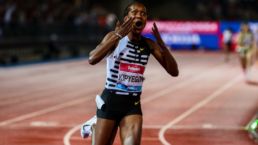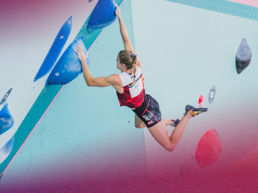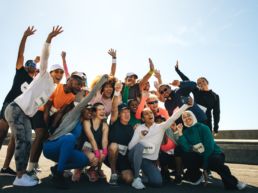In recent years, Athletics has developed both as a brand and a competitive discipline under the leadership of World Athletics President Sebastian Coe, ensuring its relevance in today’s sports landscape. World Athletics efforts are reflected in the numbers, with Coe recently stating that a late 2022 Nielsen survey placed athletics fourth in global sports interest, up from ninth in 2015.
This shift is crucial as we approach Paris 2024, prompting us to reflect on World Athletics impact on athletics and its significant evolution over recent years.
The Rise of a New Generation
The departure of legendary athletes like Usain Bolt, Mo Farah and Shelly-Ann Fraser-Pryce was always going to present difficulties for World Athletics. Fortunately, another generation of stars has rejuvenated the sport’s appeal.
American sprinter Noah Lyles, with his charismatic presence and viral comments, is set to become a household name at this year’s Games, embodying the ideal star athlete for the social media era. Neeraj Chopra has similarly ignited a renewed passion for athletics in India and American Sha’Carri Richardson has drawn significant attention across social media platforms.
The emergence of these talented athletes has sustained the audience for World Athletics, a trend that is sure to escalate after Paris 2024 with the worlds spotlight firmly fixed on them during the games.
Leveraging Social Media
The prowess of World Athletics on social media channels has been a cornerstone of its growth strategy, leading to an overall ranking of #2 in the SportOnSocial League Table 2024 (including top 3 finishes on Instagram, Facebook, Twitter, YouTube).
World Athletics’ skilful use of social media, including native footage, trending content, and athlete collaborations, has enhanced reach and engagement across multiple social channels. This strong online presence is key to attracting younger fans, a priority for sustaining the sport’s popularity, as Coe has previously emphasized.
Boosting Event Attendance
Building towards the Olympic Games, the 2023 World Athletics Championships in Budapest witnessed a remarkable surge in attendance (almost tripling the numbers vs 2022).
This increased fan engagement clearly signals a rising interest in athletics, a trend that is closely linked to the increasing popularity of the Diamond League.
The Diamond League has played a pivotal role in appealing to a growing and consistent audience, contributing to the 2020–2023 strategic growth plan set by World Athletics. An impressive performance by the Diamond League in the SportOnSearch 2024 rankings underscores the strategy’s success, where it saw an +85% increase in search interest, climbing +6 spots to rank #3 overall.
Financial Incentives for Athletes
World Athletics is taking other measures off the track, too, becoming the first International Federation (IF) to award prize money to Olympic medallists. From Paris 2024 onwards, gold-medal athletes will receive $50,000; there are also plans to include prize money for silver and bronze medallists by Los Angeles 2028.
This move recognises the vital role individual athletes play in promoting the sport’s brand – enhancing its strength and sustainability – while empowering them at the same time. Such a proactive approach underscores the organisation’s commitment to change with the times and maintain relevant in today’s dynamic sports landscape.
A new milestone for our sport 🏟️
— World Athletics (@WorldAthletics) April 10, 2024
World Athletics becomes the first international federation to award prize money at the Olympic Games.
Take a look at some of the other major athletics milestones at the Olympics.
Press Release 🔗 https://t.co/8OZAwlJy5W pic.twitter.com/luNjZ9lhHP
Conclusion: Key Takeaways for Sports Rights Holders
The willingness of World Athletics to progress with the times provides valuable insights into how other sports rights holders can maintain or boost their own brand.
1. Embrace the Power of New Generations
Keep the sport vibrant and relevant by transitioning smoothly from legacy athletes to a new generation of talent that connects well with younger digital-savvy audiences.
2. Leverage Digital Platforms for Broader Engagement
Build a strong understanding of social trends and platforms before using social media and these digital tools to increase visibility and engage younger demographics, ensuring your sport appeals across diverse groups.
3. Innovate with Athlete Incentives
Extending financial support to include a wider range of rewards can motivate athletes and make them feel more connected to their IF. A financial incentive boosts athlete profiles and allows them to flourish – something which would ultimately benefit your brand.
4. Optimise Event Calendars
Leverage flagship events, e.g. the Diamond League, and use high-profile competitions to build and engage a consistent audience throughout the season while also driving interest and attendance.





